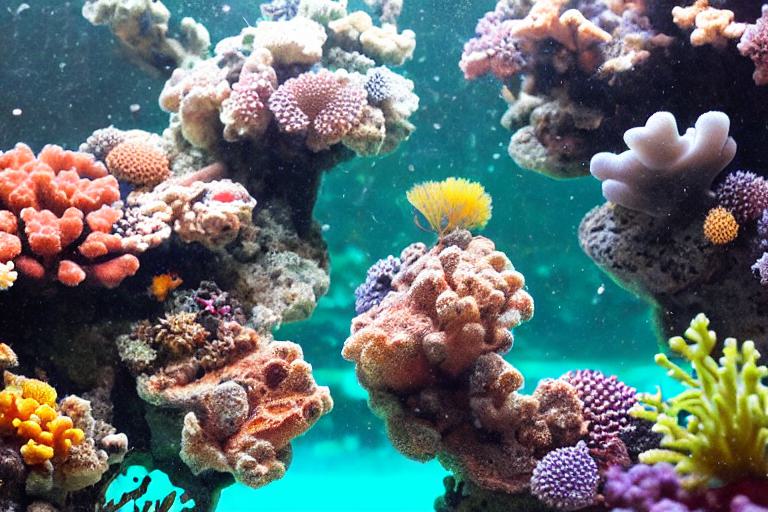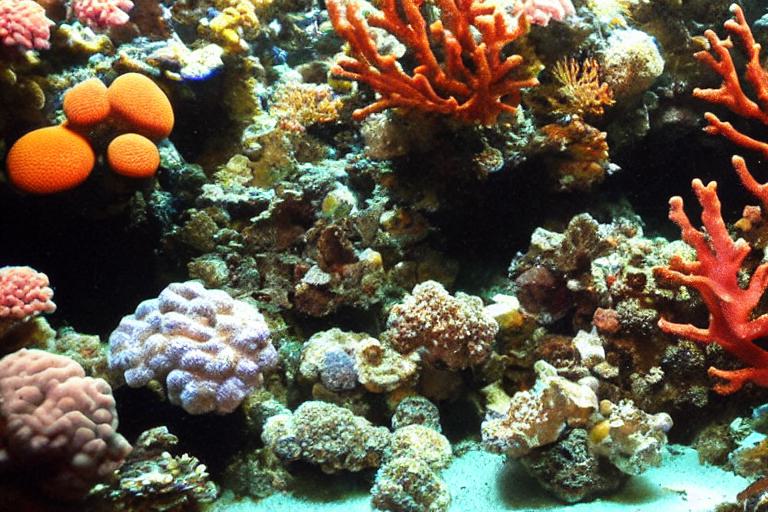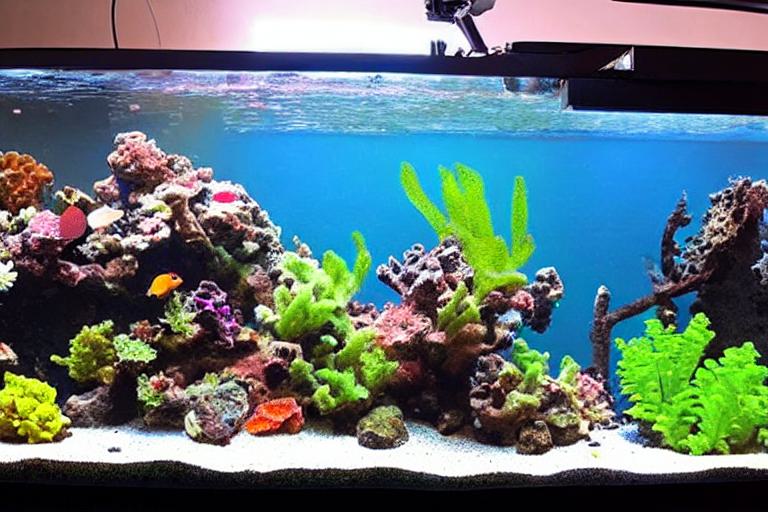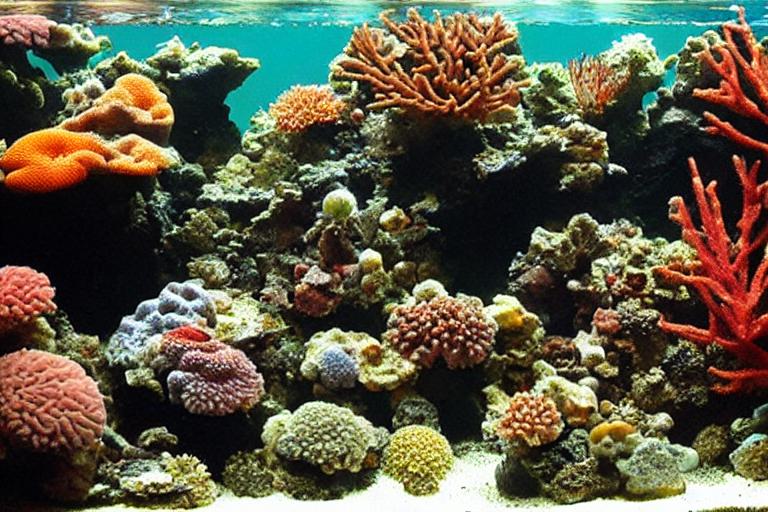Coral propagation is the process of growing new corals from existing ones. It is a key process in reef tank management and allows hobbyists to maintain a healthy and diverse coral population. There are several methods of coral propagation, including fragging, tissue culture, and sexual reproduction. This article will focus on fragging, which is the most common method of propagation among reef tank hobbyists.
Coral Propagation: What Is It and Why Should You Do It?
Coral propagation is the process of growing new corals from fragments of existing corals. It is a common practice in the reef aquarium hobby, and can be a great way to add new corals to your tank without having to buy them from a store.
Whatever your reasons, propagating corals can be a fun and rewarding experience. There are many reasons why you might want to propagate corals. Perhaps you want to add a new type of coral to your tank, but don’t want to spend the money to buy a whole new one. Or maybe you have a coral that is starting to look a bit unhealthy and you want to give it a “boost” by propagating it.
First, make sure that you have a good knowledge of the coral you are propagating. There are a few things to keep in mind when propagating corals. This will help to prevent the spread of disease. Some corals are easier to propagate than others, so it is important to do your research before you get started. Second, be sure to use sterile tools and techniques when propagating your corals.
In addition, there are many reef aquarium forums where experienced hobbyists can offer advice and support. If you are interested in propagating corals, there are many resources available to help you get started. There are plenty of books and websites that can provide you with information on the best techniques and methods for propagating corals.

How to Propagate Corals in a Reef Tank?
It is a key part of reef conservation and helps to ensure the long-term health of coral reefs. Coral propagation is the process of growing new corals from existing ones.
This involves breaking a piece of coral off of the main colony and allowing it to grow into a new one. There are several methods of coral propagation, but the most common and effective method is fragmentation.
To fragment a coral, first, choose a healthy piece of coral that is at least 2-3 inches in diameter. Each piece should have at least one living polyp. Using a sharp knife or pair of scissors, carefully cut the coral into 2-3 pieces.
It is important to provide them with good water quality and lighting. Next, place the coral pieces in a location in your reef tank where they will have plenty of room to grow.
Coral propagation can be a slow process, but it is a rewarding one. By taking the time to propagate corals, you are helping to ensure the future health of coral reefs around the world.
Coral Fragging and Propagation of Stony Corals (LPS and SPS)
The process involves taking a small piece of coral and attaching it to a substrate, where it will grow and form a new colony. Coral propagation is a popular way to add new corals to a reef tank, and it is also a way to create new colonies of rare or threatened corals. Coral fragging and propagation is a process by which stony corals (LPS and SPS) are grown in captivity.
The fragment will need to be attached to the substrate using a glue or epoxy. First, the coral fragment must be carefully cut from the parent colony. Once the fragment is attached, it will need to be given time to heal and grow. Coral fragging is a relatively simple process, but it requires some care and attention to detail. The fragment should be cut using a sharp knife or razor, and it should be cut as close to the base of the coral as possible. Next, the fragment should be placed on the substrate in the reef tank.
Coral propagation is a great way to add new corals to a reef tank. It is also a way to create new colonies of rare or threatened corals.

Coral Fragging and Propagation of Soft Corals
The process of fragging and propagation allows reef aquarists to maintain a higher density of corals in their aquariums while also providing a source of new corals for trade or sale. Coral fragging and propagation is a process by which a piece of coral is cut from a larger colony and then reattached to a rock or other substrate in the reef aquarium.
Second, it is important to choose a healthy piece of coral to frag. First, it is important to have a sharp knife or pair of scissors available. Finally, it is important to be aware of the potential for disease transmission when fragging and propagating corals. There are a few things to consider before fragging and propagating corals.
This will help to ensure that the pieces will be able to reattach themselves to the substrate and form a new colony. It is also important to place the pieces of coral in an area of the aquarium where they will receive adequate water flow. When fragging and propagating corals, it is important to make sure that all of the pieces are of a similar size.
By fragging and propagating corals, you can also provide a source of new corals for trade or sale. Coral fragging and propagation is a great way to maintain a higher density of corals in your reef aquarium.
Safely Fragging Corals
It is a relatively simple process that can be done safely with a few tools. Fragging corals is a great way to propagate them in a reef tank.
First, you will need a sharp knife or pair of scissors. Second, you will need a piece of live rock or coral skeleton to attach the frag to.
Attach the frag to the live rock or coral skeleton using aquarium safe glue or epoxy. To frag a coral, simply cut or break off a piece of the coral colony. Make sure that each piece has some of the coral’s tissue and at least one polyp.
Once the frag is attached, it will need to be given time to heal and attach itself to the new substrate. After a few weeks, the frag will be fully attached and can be moved to its final location in the reef tank.
How to Grow Your Corals in a Reef Tank?
Here are some tips on how to grow your corals in a reef tank: Corals are beautiful, living creatures that add both color and life to a reef tank. While they are not difficult to care for, they do require some specific attention in order to thrive.
Corals need light to grow and thrive, so make sure your reef tank is well-lit. Provide plenty of light. 1.
Keep the water quality high. 2. Corals are sensitive to water quality, so it’s important to keep the water in your reef tank clean and well-filtered.
3. You can do this by target feeding them with a coral food or by using a reef-safe fish as a cleanup crew. Feed your corals. Corals need to be fed regularly in order to grow.
This can be done by fragging, or breaking off a piece of the coral, and then attaching it to a new piece of rock. Propagate your corals. One of the best ways to ensure that your corals continue to grow is to propagate them. 4.
By following these tips, you can ensure that your corals will grow and thrive in your reef tank.
Provide Good Lighting
Lighting is one of the most important factors in propagating corals in a reef tank. Corals need light to grow and thrive, and the right lighting can make all the difference in their success.
Finally, you’ll need to provide a light spectrum that promotes coral growth. Second, the light should be bright enough to encourage photosynthesis, but not so bright that it bleaches the coral. There are a few things to keep in mind when choosing lighting for your propagated corals. First, you’ll need to provide enough light for the coral to grow.
Some corals need more light than others, so it’s important to research the lighting requirements of the specific coral you’re propagating. In general, though, most corals need at least 2-3 watts of light per gallon of tank water. When it comes to providing enough light, it’s important to remember that not all corals are the same.
It’s also important to provide a light spectrum that promotes coral growth. Most corals need a mix of blue and white light, with some corals also benefiting from additional light in the red spectrum. You can provide the right light spectrum with a combination of fluorescent, metal halide, and LED lights.
By providing enough light and the right light spectrum, you’ll give your corals the best chance for success. With the right lighting, you can create a thriving environment for your propagated corals.

Supplement Your Coral With Extra Nutrition
Coral propagation is the process of artificially cultivating corals to create new colonies. It is a common practice among reef aquarists who want to add corals to their tanks without damaging wild populations.
This can be done with a variety of materials, including live rock, ceramic tiles, or even plastic. There are several methods of coral propagation, but the most common is to simply break off a piece of coral and attach it to a new substrate.
In order for the coral to thrive, it is important to provide it with extra nutrition. Once the coral has been attached, it will begin to grow and form a new colony. This can be done by supplementing its diet with coral food or by adding extra nutrients to the water.
Coral propagation is a great way to add new corals to your reef tank without harming wild populations. By providing your coral with extra nutrition, you can ensure that it will thrive and grow into a beautiful new colony.
Make Sure The Water Parameters Are Perfect For Corals
If the water parameters are not perfect, the corals will not be able to survive and will eventually die. Corals are very sensitive to changes in water parameters, so it is important to make sure the water parameters are perfect for corals before propagating them. The ideal water parameters for corals are a temperature of 25-28 degrees Celsius, a pH of 8.0-8.4, and a salinity of 35 ppt.

Frequently Asked Questions
1. What is coral propagation?
Coral propagation is the process of growing new corals from fragments of existing corals. This can be done either in the wild or in a reef tank.
2. Why propagate corals?
There are a few reasons why you might want to propagate corals. Maybe you want to create a more diverse ecosystem in your reef tank. Or you may want to increase the number of corals you have to sell or trade.
3. What equipment do I need?
To propagate corals, you will need a sharp knife, a pair of tweezers, and a container to put the coral fragments in.
4. How do I propagate corals?
First, you will need to find a healthy coral that you want to propagate. Using the knife, carefully cut off a piece of the coral. Make sure that each piece has at least one polyp. Using the tweezers, place the coral fragments into the container.
5. How do I care for my propagated corals?
You will need to provide your propagated corals with the same care as you would any other coral in your reef tank. This includes maintaining water quality, providing adequate lighting, and feeding them.
6. What are the benefits of propagating corals?
Propagating corals can create a more diverse ecosystem in your reef tank. It can also help to increase the number of corals you have.
7. Are there any risks?
There are a few risks associated with propagating corals. If you do not handle the corals properly, you can damage them. Additionally, if the water quality in your reef tank is not maintained, the coral fragments may not survive.
8. Can I propagate any type of coral?
No, not all corals can be propagated. Only certain types of corals can be propagated using the methods described here.
9. What if I can’t find any coral fragments?
If you can’t find any coral fragments, you can try to grow new corals from scratch. This is a more difficult process, and it may not be successful.
10. Can I propagate corals in the wild?
Yes, you can propagate corals in the wild. However, you need to be careful not to damage the coral reef.
Final thoughts
Corals are an essential part of a reef ecosystem and their propagation is important for the health of the reef. In a reef tank, corals can be propagated by fragmentation, by sexual reproduction, or by asexual reproduction. Fragmentation is the most common method of propagation and is accomplished by breaking off a piece of coral and attaching it to a rock or another piece of coral. Sexual reproduction occurs when male and female corals release eggs and sperm into the water column and the eggs are fertilized. Asexual reproduction is when a piece of coral breaks off and grows into a new coral. All of these methods are important for the propagation of corals in a reef tank.
